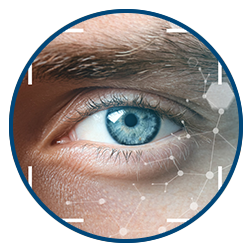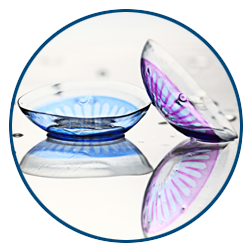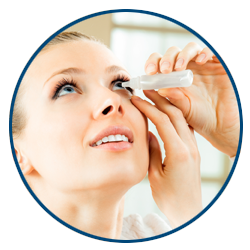PROKERA®

EyeSymmetry Vision Center has been CERTIFIED AS A DRY EYE CENTER OF EXCELLENCE and can prescribe and administer advanced treatments for Dry Eye Disease by Bio-Tissue, the industry leader in regenerative tissue therapies and ocular hygiene products for lid margin and ocular surface diseases.

What is PROKERA?
PROKERA® is a therapeutic device used by eye doctors around the world to protect, repair and heal damaged eye surfaces. PROKERA® is made by clipping a piece of amniotic membrane tissue in between two rings made out of a clear, flexible material.

What is amniotic membrane tissue?
Amniotic membrane is part of the placenta and is the tissue closest to the baby throughout development in the womb. Amniotic membrane protects the baby from any harm and has natural therapeutic actions which help the baby develop. The tissue has healing properties that aid in ocular surface repair.
What does PROKERA® do?
The amniotic membrane tissue in PROKERA® has natural therapeutic actions that help damaged eye surfaces heal. Eyes treated with PROKERA® have quicker healing, less pain, less scarring, and less inflammation. The amniotic membrane in PROKERA® is thin and clear like the tissue on the surface of your eye and protects your eye’s damaged tissue while inserted.
 Before |  After |
What does PROKERA® treat?
PROKERA® is used by eye doctors to treat eye diseases such as:
- dry eye
- keratitis
- corneal scars
- chemical burns
- corneal defects
- partial limbal stem cell deficiency
- many other ocular surface diseases with inflammation
Is PROKERA® safe?
PROKERA® is a safe, effective treatment provided by a tissue bank regulated by the FDA. The tissue has passed many quality control tests before it is provided to your doctor. Ask your doctor if you are concerned about the risks involved with using a human tissue.
PROKERA Reduces Inflammation & Promotes Healing.
When damage to the eye creates cornea scarring, the healing process on the surface of the eye will develop scar tissue. The scar tissue can disrupt the way your eyelid moves and even the way tears pass across the surface. Although the healing process is natural, the cornea scarring may lead to inflammation and dry eye symptoms, as a result, in which, before Prokera, was almost unavoidable and may required surgery.
Today, Prokera has allowed Dr. Schwartz to treat mild and even severe cornea scarring through a simple application of an amniotic membrane. However, due to the sensitivity and immediate effects involved, one should consult Dr. Schwartz, a contact lens expert, regarding the candidacy, expectations, and the overall procedure.







